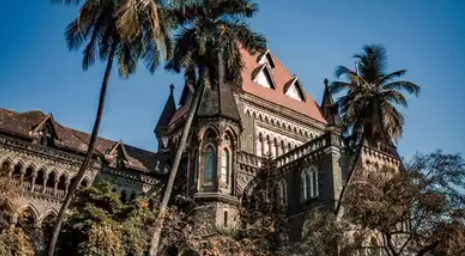A Case of Nothing but Patent Censorship (GS Paper 2, Governance)

Context
- The ruling by the Bombay High Court on September 20, 2024, was a landmark decision emphasizing the sanctity of free speech.
- Justice A.S. Chandurkar's verdict addressed an amendment to the Information Technology (Intermediary Guidelines and Digital Media Ethics Code) Rules, 2021, which, if upheld, would have given the Indian government sweeping powers over how news about its actions is shared and perceived online.
Introduction
- The case arose from concerns that the amendment, particularly Rule 3(1)(b)(v), threatened to curtail fundamental rights by allowing the government to dictate what constitutes "fake" or misleading information.
- This intervention could severely restrict public discourse and the media's ability to scrutinize government actions, thus undermining the democratic fabric of the nation.
The Provision in Question
Rule 3(1)(b)(v) mandated that intermediaries—such as social media platforms and internet service providers—were required to take "reasonable efforts" to avoid hosting content identified by the government’s Fact Check Unit (FCU) as false or misleading. The ramifications of this provision were profound:
- Loss of Safe Harbour: Intermediaries risked losing their "safe harbour" immunity—a protective measure that shields them from liability for third-party content. This immunity is crucial for the functioning of the internet as it allows platforms to host diverse views without fear of retribution.
- Chilling Effect: By imposing these obligations, the amendment created a chilling effect, discouraging intermediaries from hosting potentially controversial content, which could lead to self-censorship and a significant narrowing of the public discourse.
The Problem of Fake Information
- While misinformation is a legitimate concern, the court recognized that any governmental response must conform to constitutional safeguards.
- The petitioners argued that the government overstepped its authority by assuming the power to define what constitutes fake information without transparency or accountability.
- They emphasized that there were less intrusive methods available to combat misinformation that did not infringe on free speech.
Petition and Response
The petitioners contended that Rule 3(1)(b)(v) undermined constitutional protections by allowing the government to unilaterally determine the truth of information related to its operations. The Union government countered with two primary arguments:
- Non-Coercive Nature: The government claimed that intermediaries were not compelled to act on the FCU’s directives and could challenge any loss of safe harbour in court.
- Limitations on False Speech: The state argued that spreading false information is not protected under the Constitution, thereby justifying the need for regulation.
However, the court found these arguments insufficient to override the constitutional safeguards protecting free speech.
Division Bench’s Split Verdict
The initial Division Bench of the High Court arrived at differing conclusions:
- Justice G.S. Patel found the provision to be ultra vires, highlighting its vagueness and the disproportionate burden it imposed on intermediaries. He argued that the chilling effect on free speech was direct and significant.
- Justice Neela Gokhale disagreed, positing that the loss of safe harbour did not constitute a direct threat to free speech rights.
Ultimately, Justice Chandurkar's opinion favored Patel’s reasoning, recognizing the critical role of safe harbour in upholding free expression.
Intermediaries and Safe Harbour
- Section 79 of the IT Act provides a crucial exemption for intermediaries, releasing them from liability for user-generated content, provided they demonstrate due diligence.
- This exemption allows platforms like Facebook and WhatsApp to function without the paralyzing fear of legal repercussions, fostering an environment conducive to open dialogue.
- The rationale behind this safe harbour is that intermediaries merely host content without editorial control.
- Subjecting them to liability for third-party content would create an untenable environment, severely undermining the very essence of the internet as a space for free exchange of ideas.
The Government’s Second Argument and Free Speech Doctrine
- The government’s second argument—that the state has the right to regulate untruthful speech—was also dismissed by the court.
- The traditional view of free speech as a marketplace of ideas suggests that open debate leads to truth and better governance.
- The court maintained that it is not the state's prerogative to define which expressions should be tolerated.
Limitations on Free Speech
- Free speech is protected under Article 19(1)(a) of the Constitution but comes with specific limitations outlined in Article 19(2).
- These restrictions are carefully enumerated and include provisions against defamation, incitement to violence, and threats to national security.
- The court emphasized that any attempt to regulate speech must align with these stipulated categories, reinforcing that there is no constitutional allowance for censorship of false information in a blanket manner.
Free Speech and Restrictions
- The foundational principles of free speech recognize both its instrumental and intrinsic values.
- Instrumentally, free speech fosters informed public discourse and better governance.
- Intrinsically, it affirms the dignity and autonomy of individuals by recognizing their right to express thoughts and beliefs freely.
- The court underscored that any limitations on free speech must be justifiable within the parameters of Article 19(2), which does not permit arbitrary or overly broad restrictions.
Conclusion
- The Bombay High Court's decision is a pivotal affirmation of free speech against government overreach.
- By declaring the amendment unconstitutional, the court highlighted the inherent danger of granting the state the authority to unilaterally determine the truthfulness of information regarding its actions.
- Such a power could lead to pervasive censorship and an erosion of democratic values.
- The ruling serves as a vital reminder of the importance of safeguarding free expression as a cornerstone of a healthy democracy, emphasizing that the government must remain accountable to its citizens rather than dictate the narrative surrounding its own actions.


